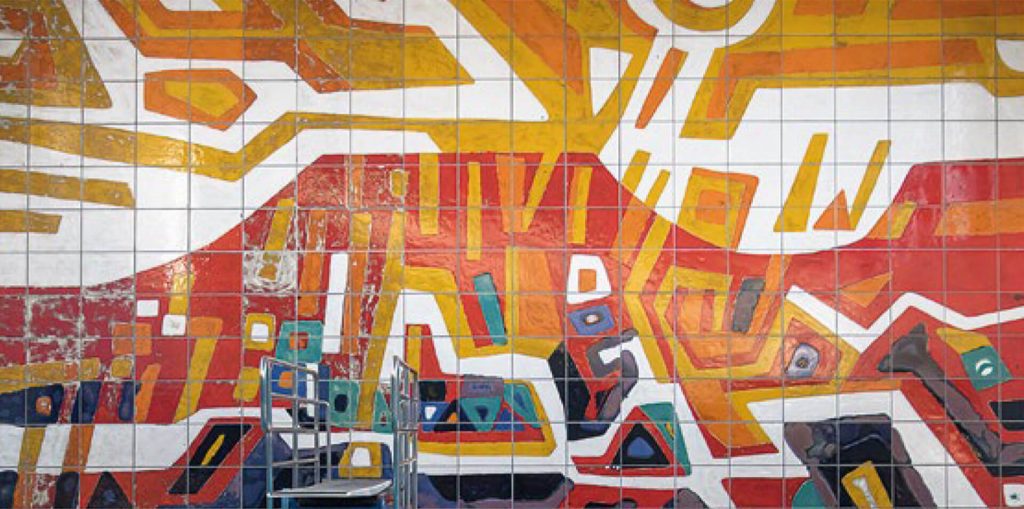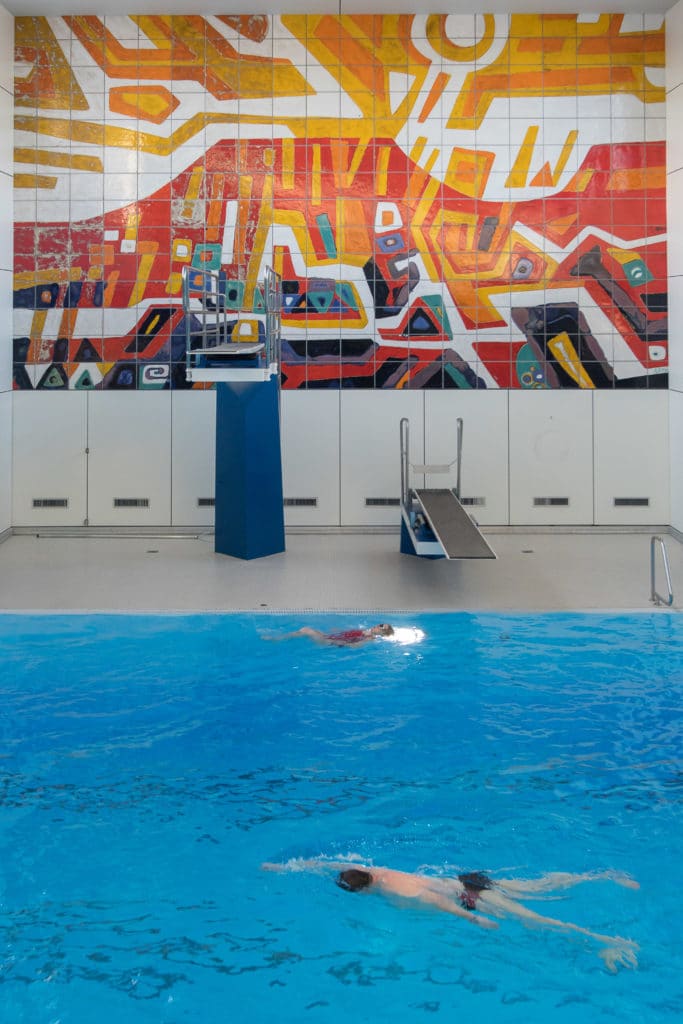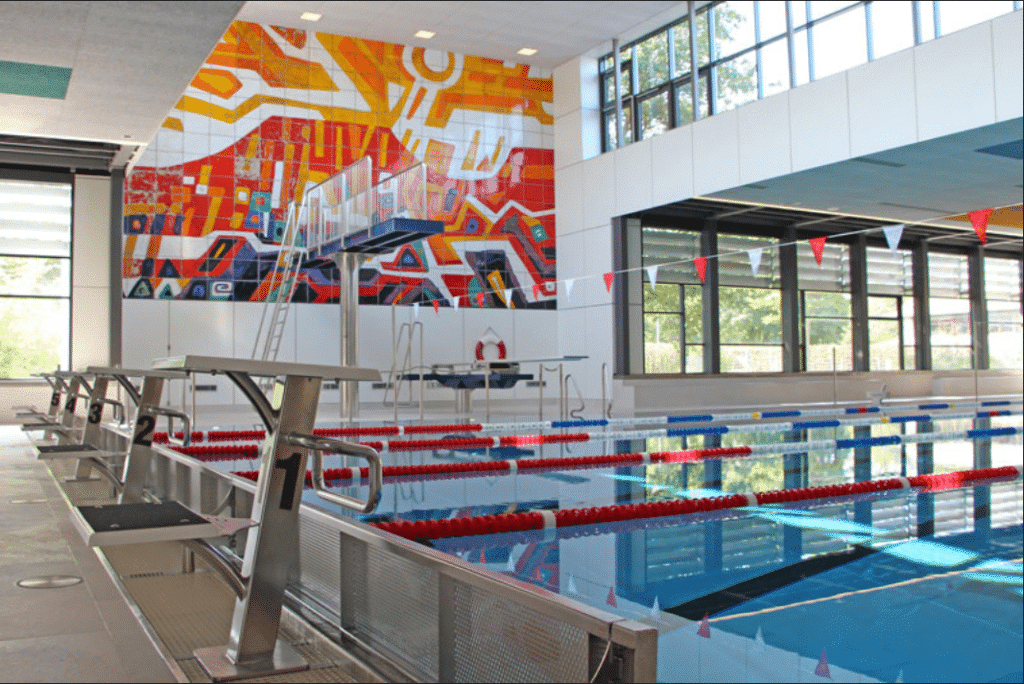ALB LANDSCAPE – PERMEATION
1974
CERAMIC TILES WITH UNDERGLAZE PAINTING
550 x 1000 cm
INDOOR SWIMMINGPOOL MOESSINGEN
Art in public space is perceived differently: Sometimes it is overlooked, sometimes it is a natural part of the public space and sometimes it is consciously perceived. But it always opens up new perspectives. This is what happened to me personally with the mural of the Mössingen indoor swimming pool, which I am very pleased to present for quarter 02.2022.
The work consists of ceramic tiles with underglaze painting and is an impressive 10 metres wide. In 1974, Andreas Felger was given this – in terms of material and dimension – challenging task and so the painting is as old as the pool itself. When I first visited the swimming pool in the early 2000s, I was certainly not familiar with any of this information. And yet Alb Landscape – Permeation was always there: when distance diving, you could tell from the colourful façade whether you had made it far enough. When waiting at the diving tower, you could let your eyes wander. And during the backstroke, the mural told you whether you were still on course. The work provided warmth in the cool blue of the indoor pool and offered peace from the excitement of many a timed swim. The relationship with art was pragmatic.
In 2015, I was commissioned by the Andreas Felger Kulturstiftung to photograph some works for the ART.STATIONS (works by Andreas Felger in public space) including the pool in Mössingen. And this opened up a new perspective for me: in the puzzle of the individual fireclay slabs with their clearly defined contrasts and areas of colour, structural similarities to Felger’s fabric designs now became visible. The ornamentation is reminiscent of the Pausa series Mexicana from the end of the 1960s. Towards the upper edge of the picture, as is so often the case with Felger’s landscape depictions, the colours become brighter and warmer and the shape of the familiar mountain silhouette around Hirschkopf and Farrenberg blends into the view of Felger’s hometown familiar from countless watercolours. They root the pool locally and at the same time broaden the horizon, especially when the colours are reflected on the ceiling and shimmer quasi-impressionistically in the water when the sun is shining. In short, the mural artistically turns the indoor pool into an outdoor pool for me.
By the way: almost 50 years after the pool was built, it was now due for renovation. The work remained. And what’s more: Andreas Felger’s language of colour and form became decisive for the rest of the interior design. More than ever before, his Alb Landscape creates new perspectives in public space and will remain etched in the biographies of many swimming pool visitors in Mössingen.
Text by Benedikt Schweizer



